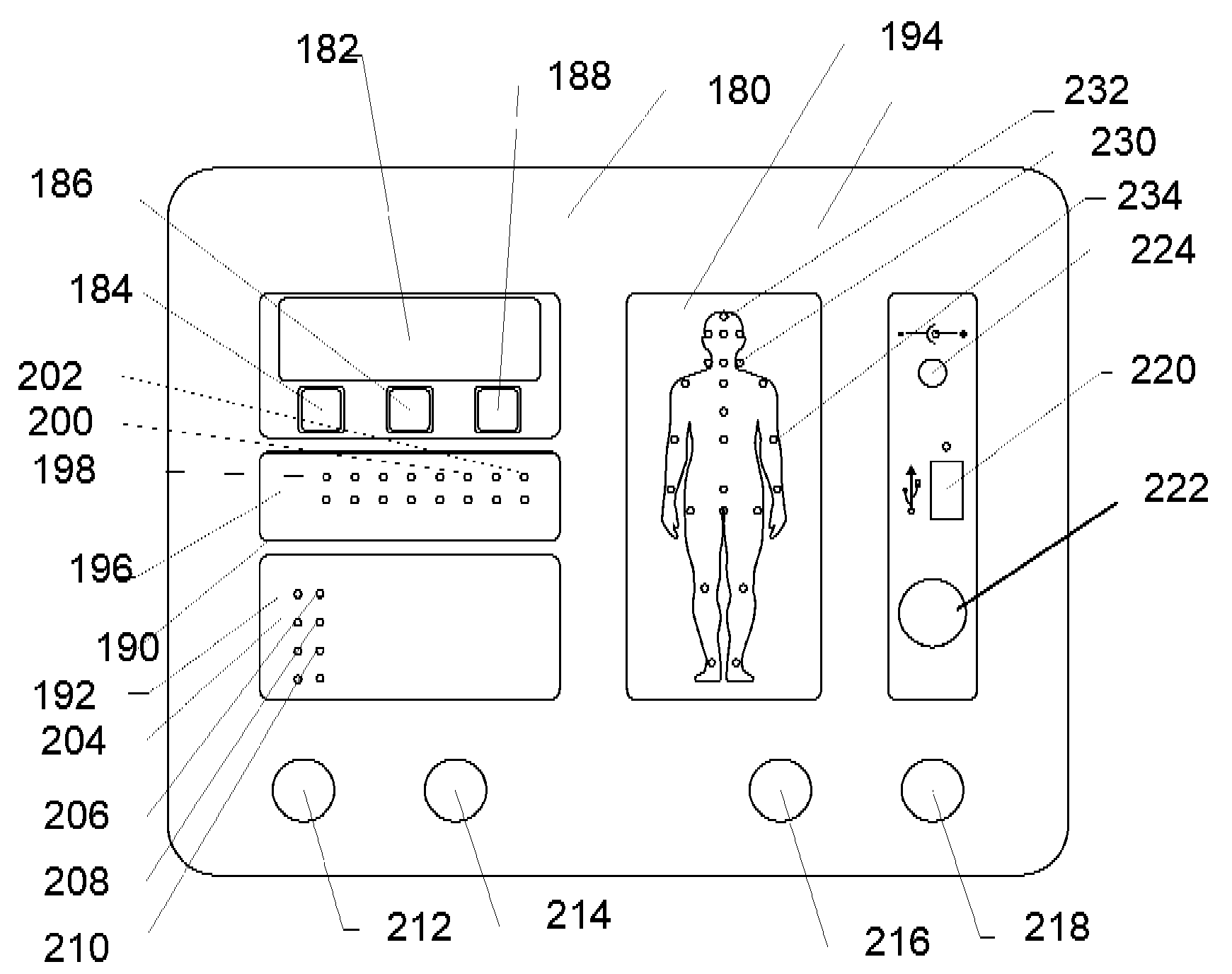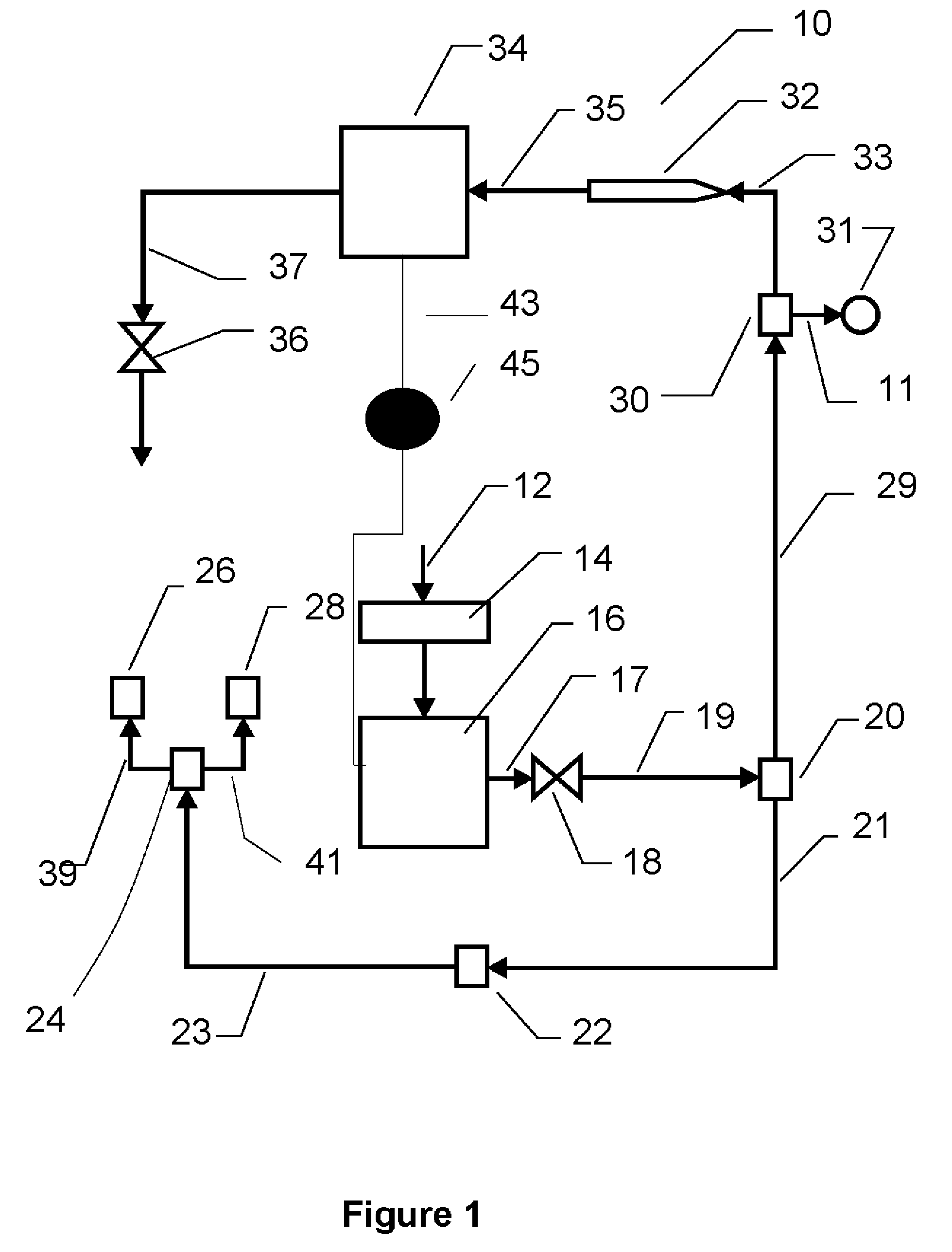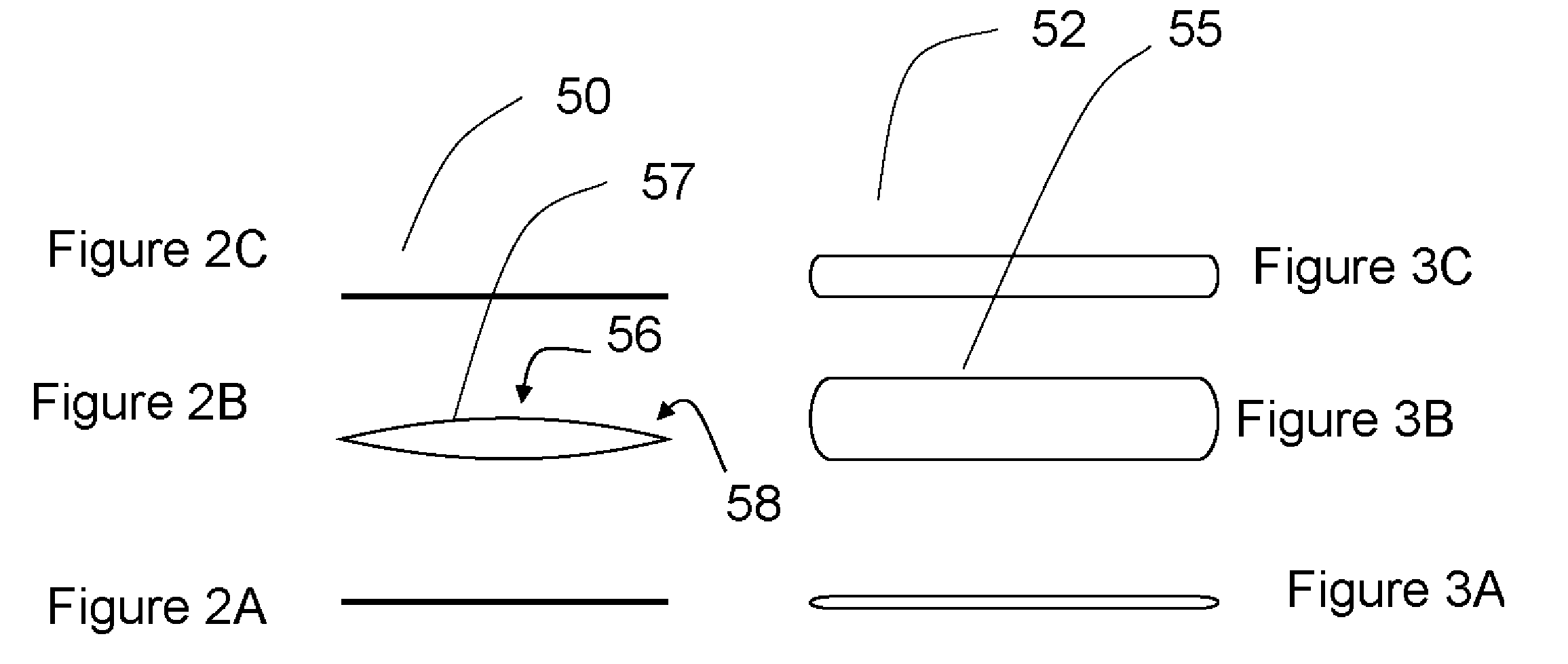Automated therapy device for biomechanical rehabilitation massage and method for use
- Summary
- Abstract
- Description
- Claims
- Application Information
AI Technical Summary
Benefits of technology
Problems solved by technology
Method used
Image
Examples
Embodiment Construction
[0044]System Design
[0045]Now referring to FIG. 1 there is shown a schematic diagram of the air flow in a preferred embodiment of the system our invention (10). Our invention is designed to exercise and strengthen smooth muscles and their associated myofascia by the application of at least one therapeutically effective pressure cycle on at least one area of the human body using at least one actuator which provides a piston-like action against the body by pressing into the body with an evenly distributed force, then withdrawing from the body in a smoothly controlled manner using an air-filled bladder as the actuator. The following components of the system are identified as follows: air intake (12), first particulate filter (14), pressurizing pump (16), pressurizing pump exhaust conduit (17), first solenoid operated valve (18), first solenoid valve outlet conduit (19), first T-junction (20), conduit (21), second particulate filter (22), conduit (23), second T-junction (24), conduit (39...
PUM
 Login to View More
Login to View More Abstract
Description
Claims
Application Information
 Login to View More
Login to View More - R&D
- Intellectual Property
- Life Sciences
- Materials
- Tech Scout
- Unparalleled Data Quality
- Higher Quality Content
- 60% Fewer Hallucinations
Browse by: Latest US Patents, China's latest patents, Technical Efficacy Thesaurus, Application Domain, Technology Topic, Popular Technical Reports.
© 2025 PatSnap. All rights reserved.Legal|Privacy policy|Modern Slavery Act Transparency Statement|Sitemap|About US| Contact US: help@patsnap.com



